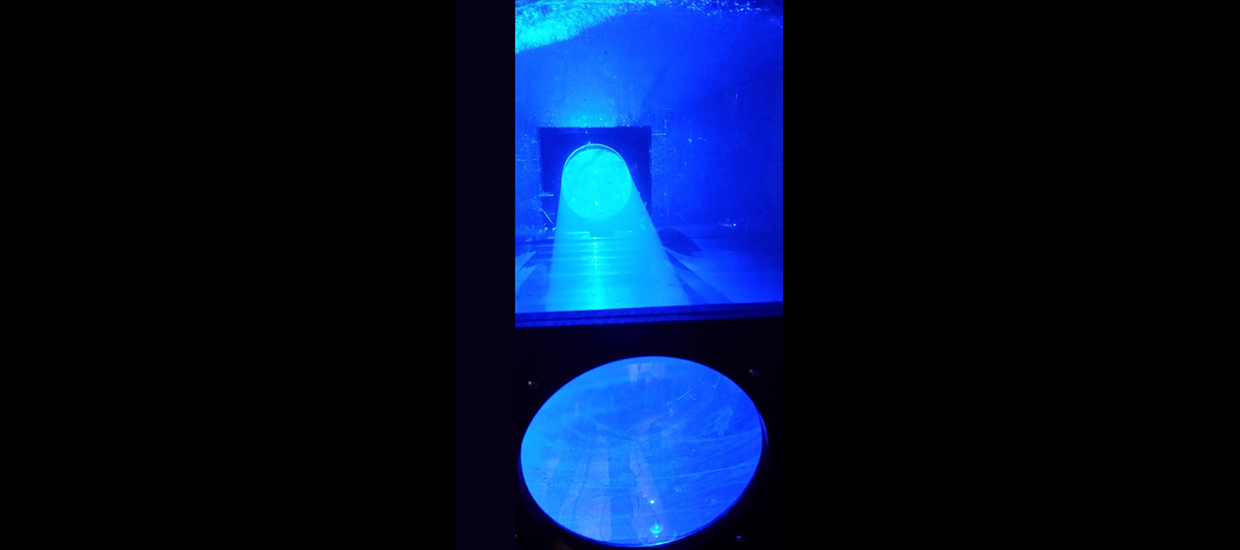Conventional macro-imaging techniques are limited by illumination intensity, depth of field, and parallax issues, thus making air bubble detection and size measurement a difficult task. To address these limitations we use focused shadowgraph techniques modified for underwater field deployments. The camera system is based on In-Situ Ichthyoplankton Imaging System ISIIS (Cowen and Guigand, 2008) technology designed at the University of Miami, RSMAS. It relies on a focus shadowgraph lighting technique coupled with a high-resolution digital camera.
Focus shadowgraphy allows for large depth of field with ample illumination for fast exposure time, avoiding field associated motion blur. Another critical aspect of this particular imaging scheme is telecentricity: constant magnification within the depth of field. The system optics comprises a collimated illuminator underwater pod and a telecentric imaging pod facing each other. The imaging set-up is aligned on an aluminum support beam allowing the light pod and the camera pod to part from 10 mm to 250 mm depending on resolution and volume imaging requirements. Shadowgraph lighting is very sensitive to small changes in density making this technique well suited for gas bubble detection. The shadowgraph images collected are first flat fielded to remove any artifacts and defects from glass windows or droplets adhering to glass surface. The corrected images are thresholded to remove the background and to segment droplets. Each droplet is located on the image and fitted with an ellipse to assess it equivalent spherical diameter. This data is then used to establish the droplet size probability density function.




